Petra, Jordan
Tuesday, November 28, 2006
Fran Goldstein, Reporting
We awake to another bright and sunny day. Suitcases outside our hotel doors at 6:30 a.m. A sumptuous breakfast at the hotel and we’re off at 7:15 a.m. for Petra, in Jordan. There is a bit of apprehension as we leave the security of our Israeli bus and familiar driver, Itzik, to be met in Jordan by a new driver and guide. Thankfully, Rabbi Walter Zanger, our wonderful Israeli guide will accompany us, although he is not licensed to guide in Jordan.
There is still some tension as we get our passports checked and we’re photographed at the border crossing.
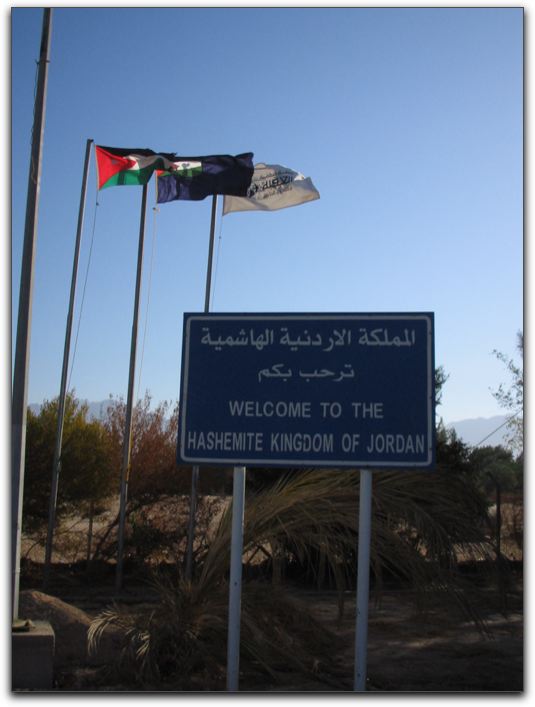
Finally, we are on our new bus and meet Fadi, our Jordanian guide, and Hassan, our driver. In the windshield of the bus is a reassuring sign:
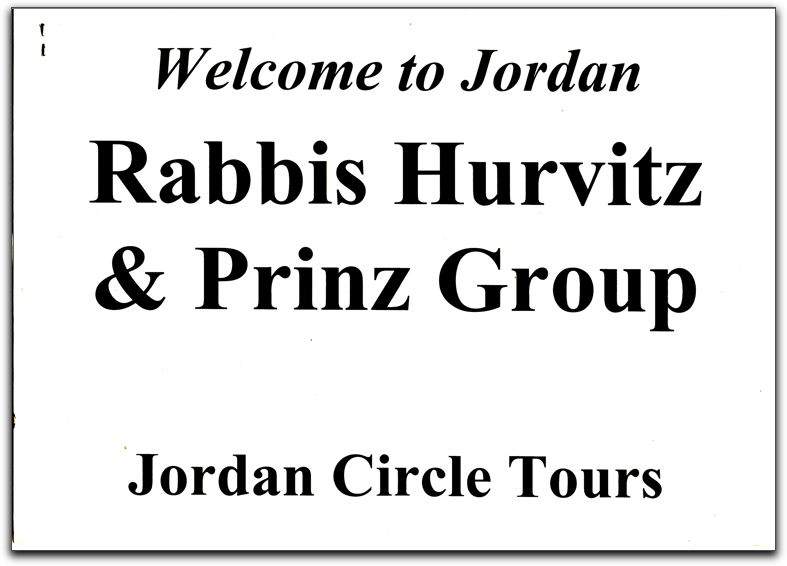
We’re surprised to be accompanied by Mr. Saleb, a tourist police officer who is to be with us the entire time we’re in Jordan. I wonder if he’s there to protect us or is he protecting Jordan from the rambunctious Americans! Fadi teaches us to say “Sabah el Khair” (“Good Morning” in Arabic) and, at 8:45 a.m. we’re on our way to Petra, about an hour-and-a-half away.
As we drive, Fadi gives us some background on Petra. It is a former trading city hidden in the mountains of southern Jordan and was first established sometime around the sixth century B.C.E. It was built by the Nabataeans, a nomadic tribe of Arabs, who controlled trade in the area and were very powerful until about 400 years later when the Romans conquered Petra and trade routes changed to the sea. Petra was forgotten, except by local Arabs until 1812 when it was “rediscovered” by Johann Burckhardt, a Swiss explorer.
We arrive to see beautiful sandstone mountains surrounding us and we individually decide whether, after we walk about half a mile, we will walk the rest of the way or ride horses, camels, donkeys or a horse-drawn cart one way or round trip for a total of approximately four miles over rocky but relatively flat terrain. Phyllis chose to go in by horseback:
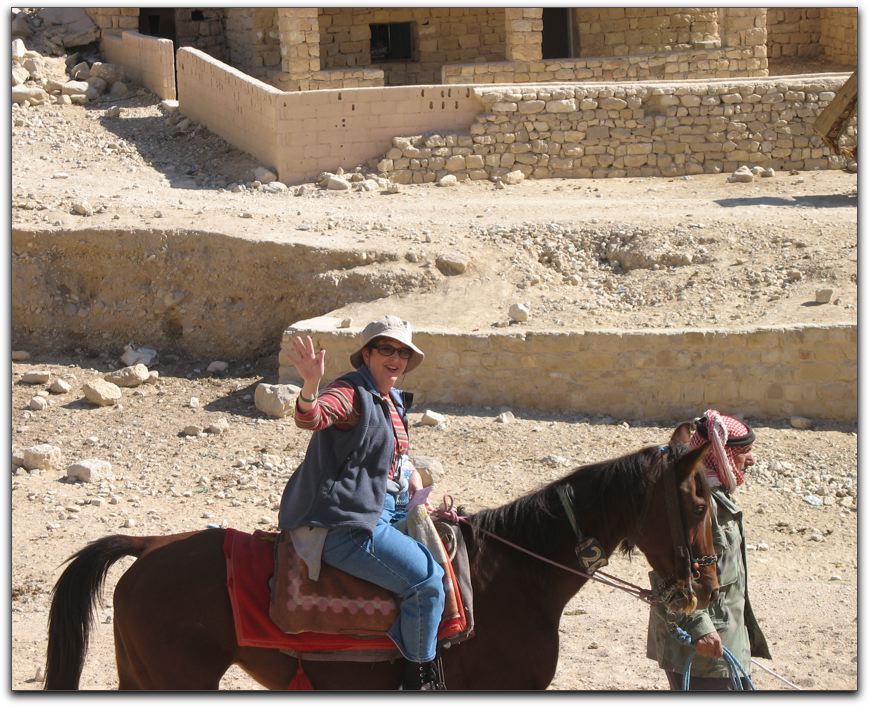
Others choose to walk:
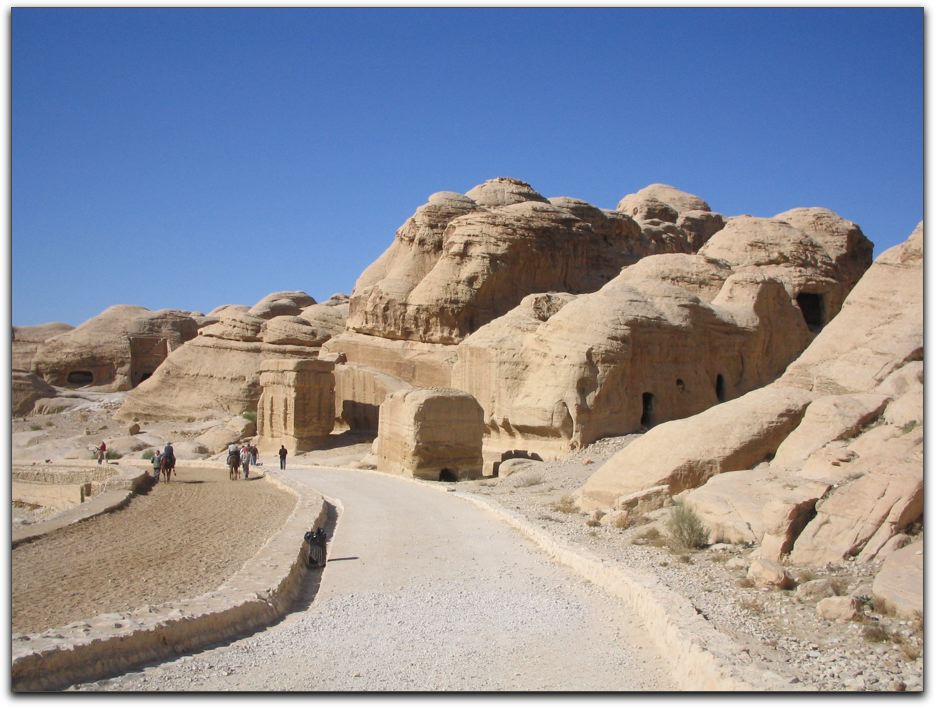
As we walk along the path through spectacular, pink-hued cliffs,
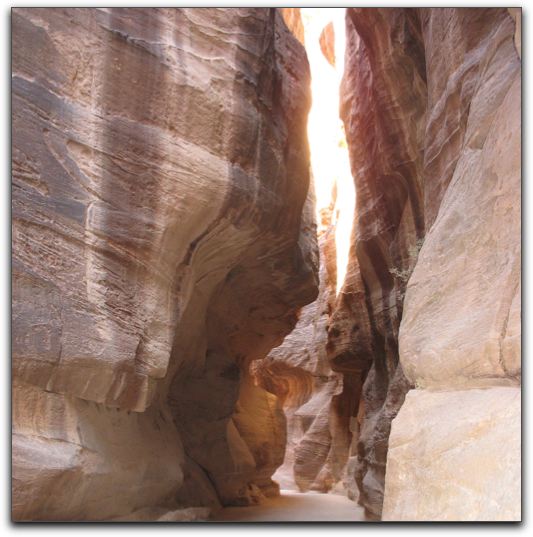
Fadi (with Walter)
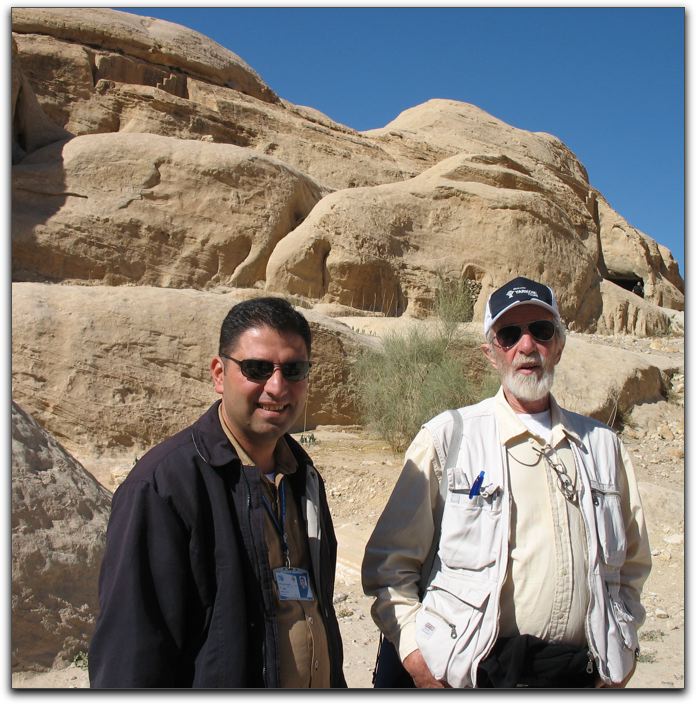
tells us that we will be traveling through the “Siq,” a narrow passageway that was created by an earthquake thousands of years ago. We are awed by the beauty of the limestone cliffs, which have eroded into remarkable shapes and colors.
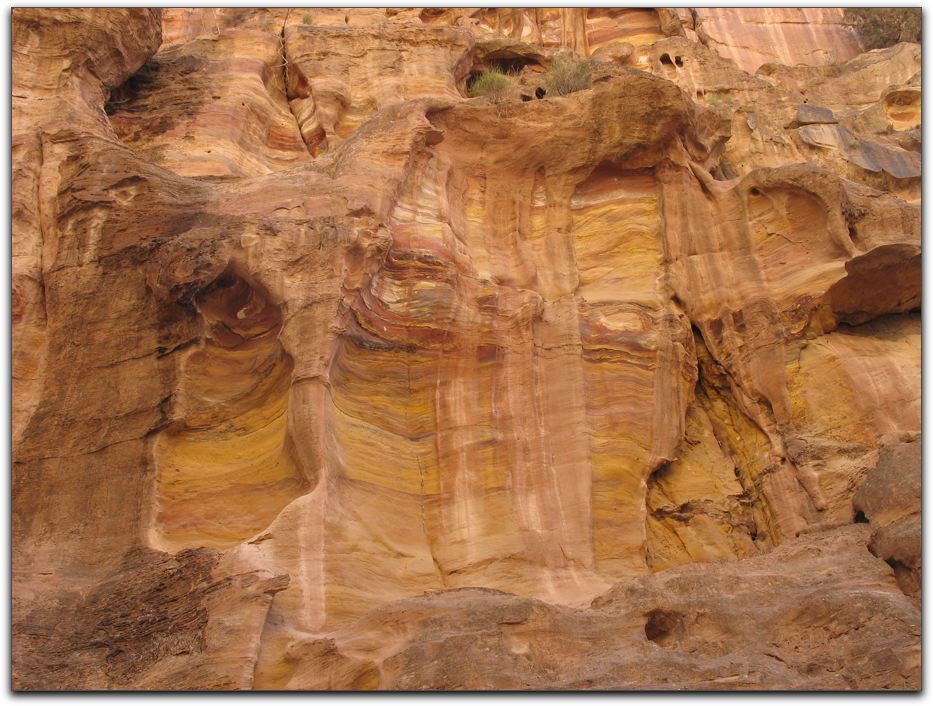
Fadi points out the ingenious water channels that the Nabataeans created to supply water to the city.
This channel is carved into the wall of the cliff:
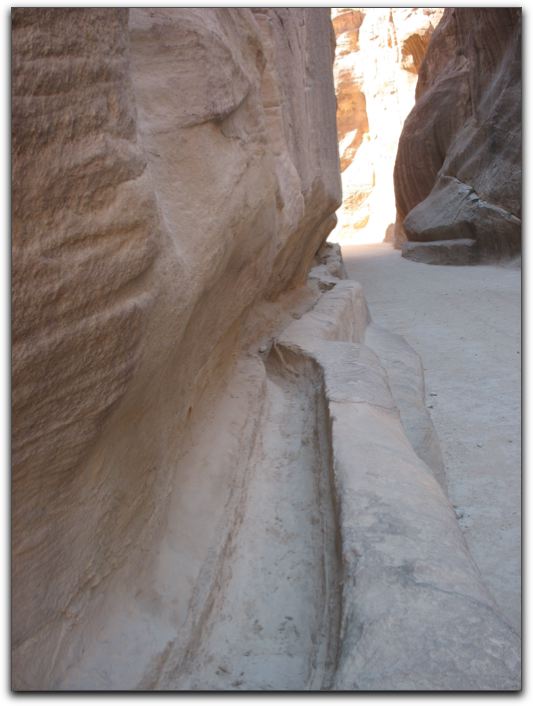
This channel even shows the remains of terra cotta “piping”:
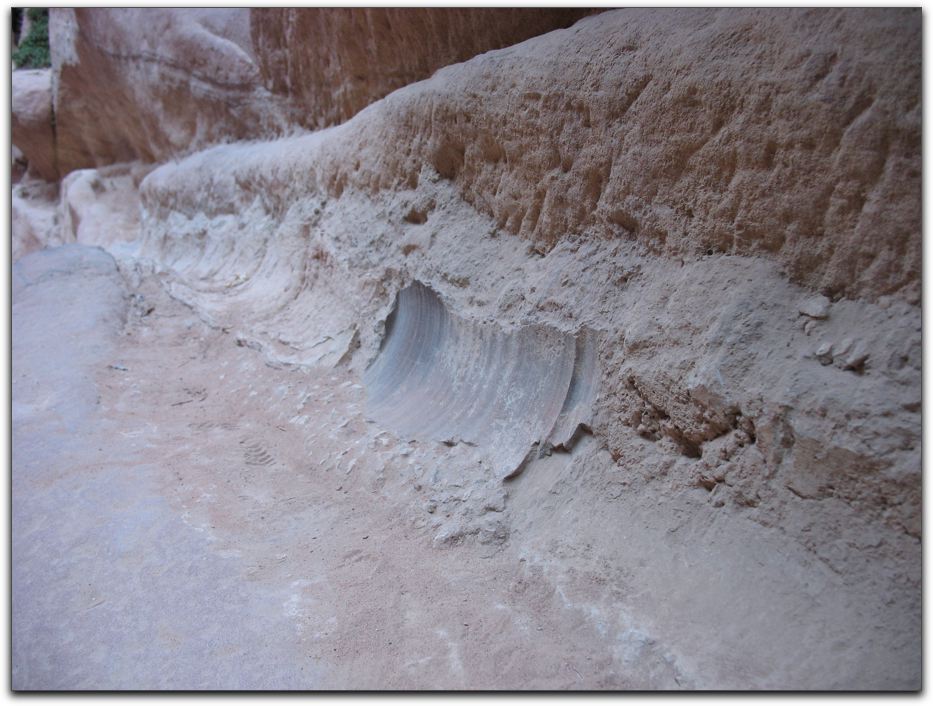
Finally, as we pass through the Siq, the “Treasury” looms before us
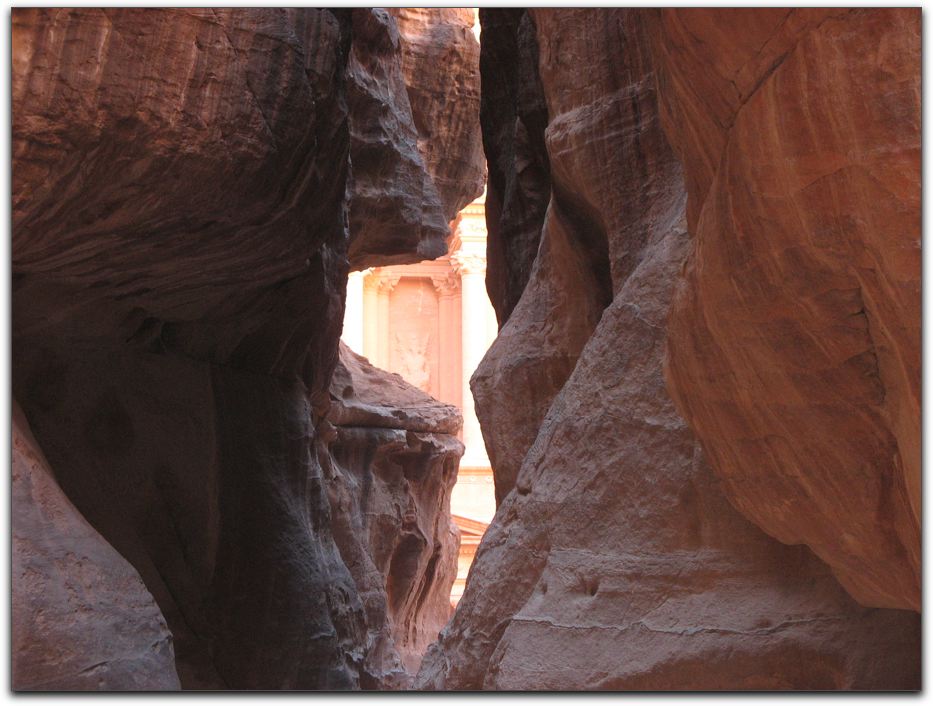
and we instinctively become silent as we are struck by the magnitude and remarkable engineering feat that the ancient Nabataeans created. Words cannot describe its beauty and sheer size. The Treasury was carved into the wall of a canyon and stands over 100 feet high. Steps have been carved from the mountain, and at the top of the steps, the facade is carved into pillars and topped by arches and intricate figures. The structure has been preserved for two thousand years because it is protected on all sides by rock walls. It is believed to have been carved as a tomb for the first Nabataean King, but has been called the “Treasury” because of a legend that it was used as a hiding place for treasures. Fadi points out areas that have been damaged by locals searching for the supposed treasure. We climb the steps and see a large room carved out of the mountain. It is surprisingly plain compared to the exterior. It is tempting to linger here, but there is more to explore.
Group Photo at the “Treasury” in Petra
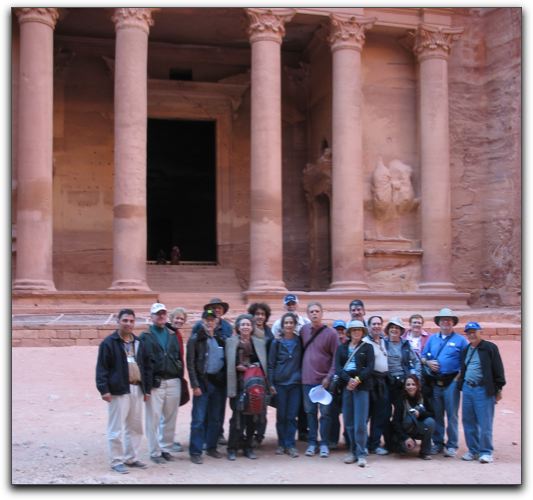
We walk by a huge Roman (type) theater and see many more tombs combing the hillside.
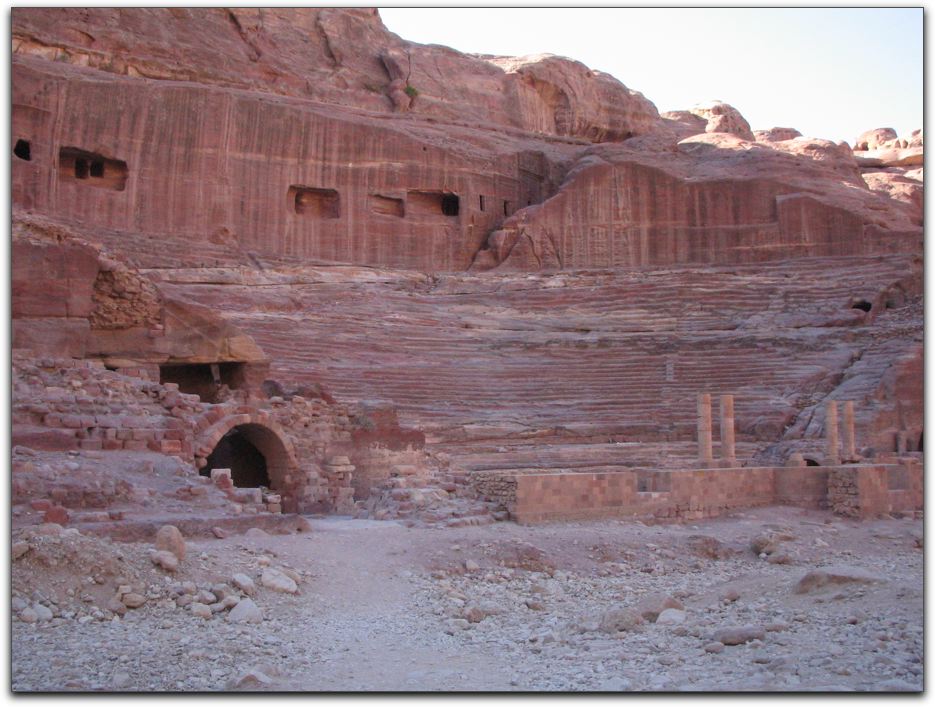
Later we come to a Nabataean temple, a huge structure which was built from sandstone blocks, as opposed to the Treasury, which had been carved from the mountain. It is an impressive site, but perhaps anticlimactic after seeing the Treasury.
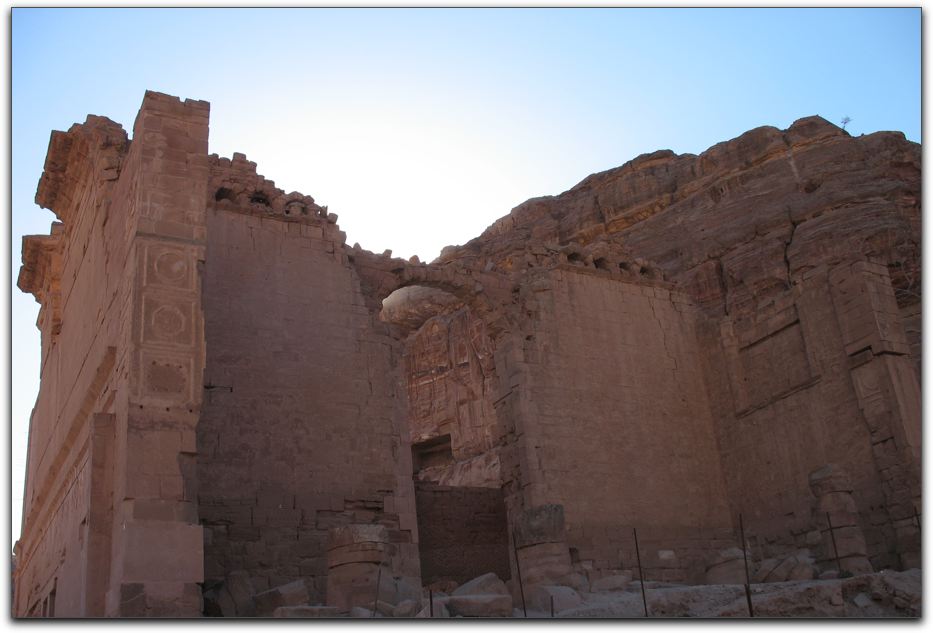
Patty and Mike pause for a photograph with more tombs behind them:
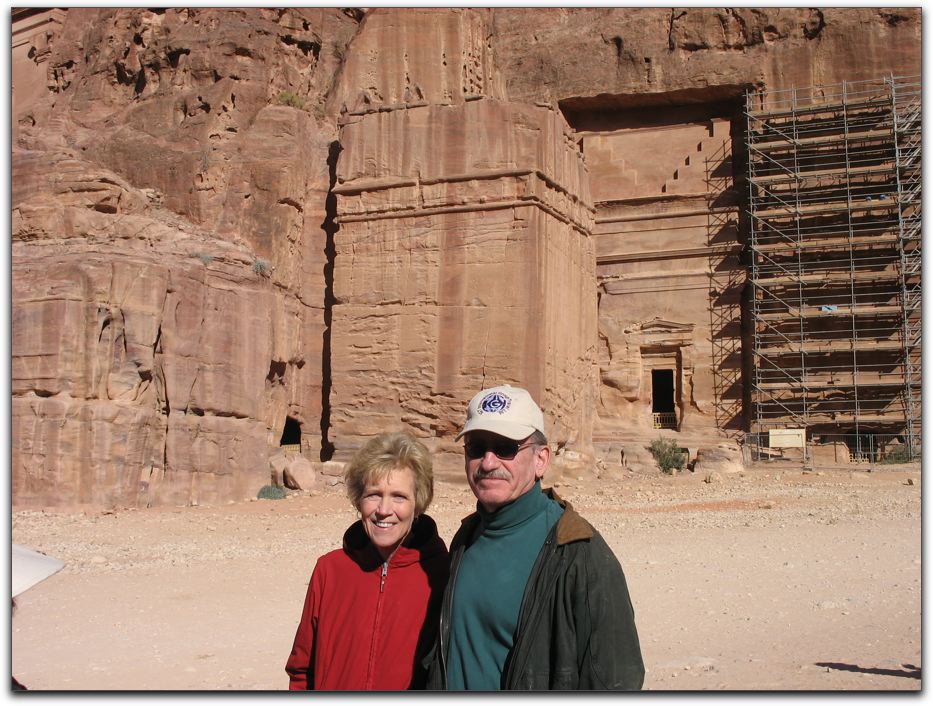
We stop for a buffet lunch at a restaurant operated by the Crowne Plaza Hotel and, after a short rest, must make our way back to the Visitor’s Center by the mode of transportation we had chosen.
Bob had decided to walk both ways as a personal challenge, so I accompany him
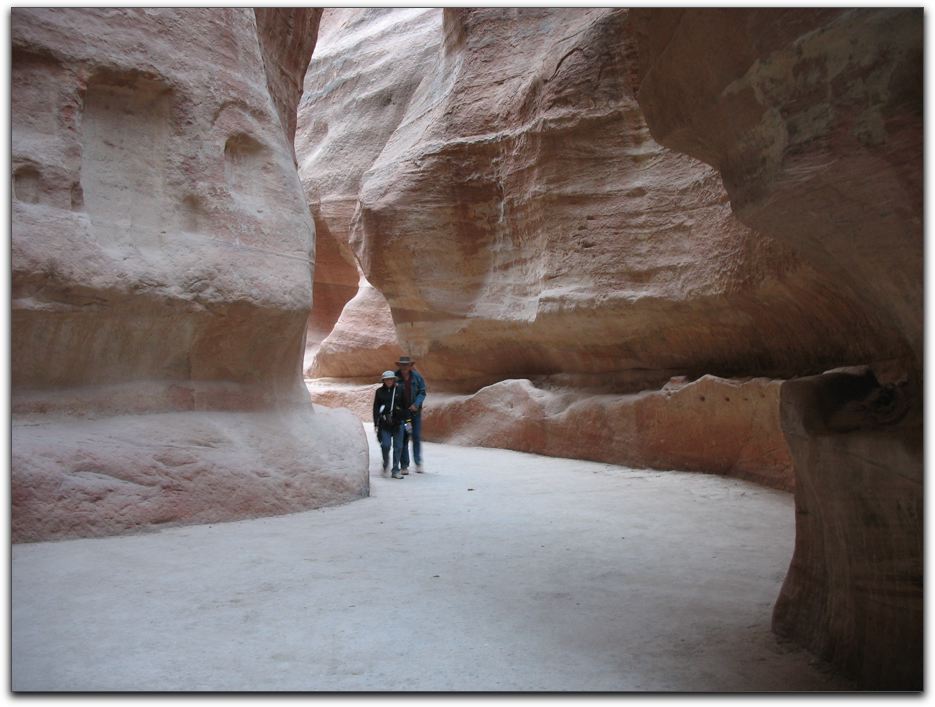
and we trudge back to the entrance to meet up with the smart folks who rode back.
We compare impressions and it’s unanimous that Petra has been one of the highlights of our trip. Our guide had mentioned that Petra was being considered as one of the new Seven Wonders of the World, and it’s clear to us that it most definitely qualifies.
Weary, but very content after an amazing day, we enter the magnificent Movenpick Hotel, where we will spend the night. Its luxurious lobby brings us back into the 21st century. A hot bath and dinner, and we’re ready for exploring the local shops.
L’Shalom,
Fran Goldstein
back || next
An Exciting Adult Trip To Israel
Thursday, November 16, 2006 - Sunday, November 26
with a special option to visit the Red Rock City of Petra in Jordan
Sunday, November 26 - Thursday, November 30
Group Leaders: Rabbi Deborah Prinz & Rabbi Mark Hurvitz || Tour Guide: Walter Zanger || Tour Agent: Abrams Travel
Despite Everything - Davka
A Starting Point














